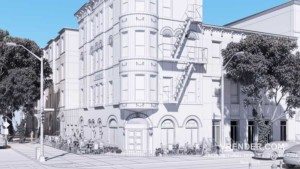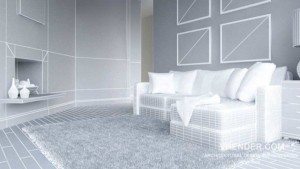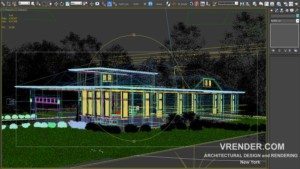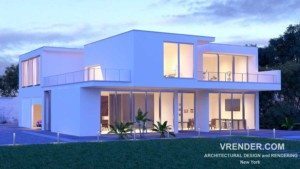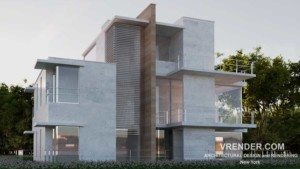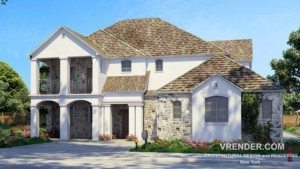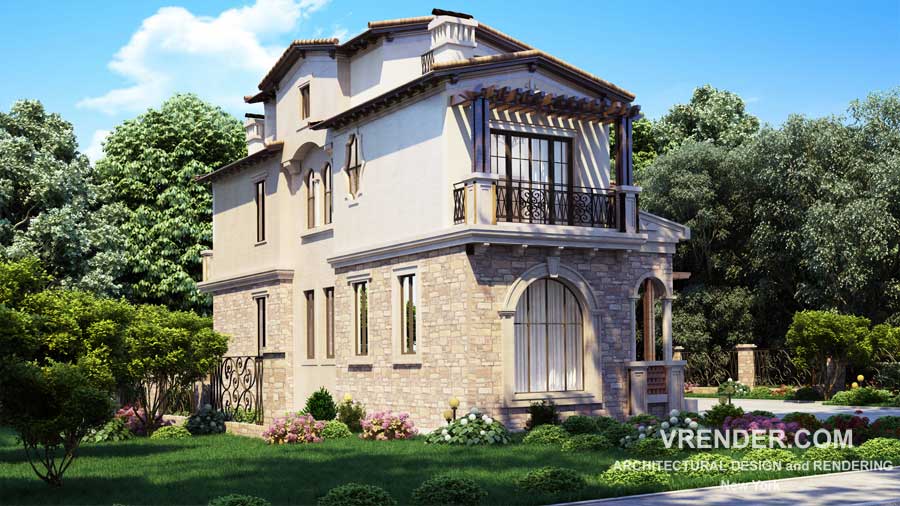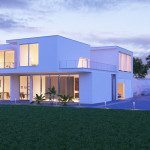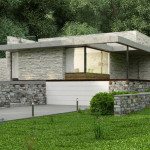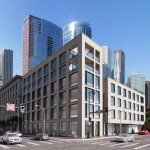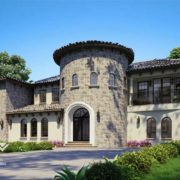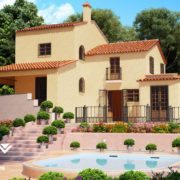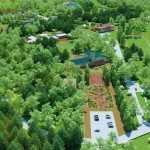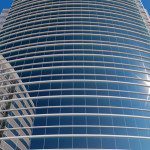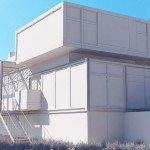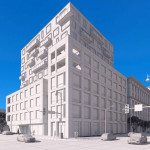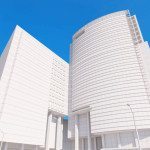Many elements of the visual environment of modern human are created today using computer graphics programs. Without visualizations made by 3D artists, cannot operate any architectural or design studio, nor producers of computer games.
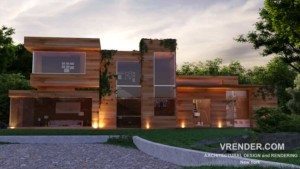
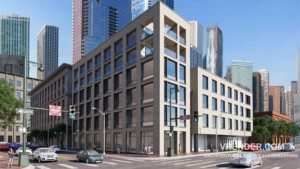
The technology of creating such image – photorealistic one or simulating a variety of artistic techniques – consists of several technological steps. Render is the most important of these and often the final one, which determines the result.
The origin of the term
The word “render” (or “visualization“) came, like many others, thanks to the IT-technologies, from English language. It originates from the Old French ‘rendre’, which means “to do”, “to give”, “to give back”. The deeper roots of this verb reach the ancient Latin: ‘re’ is the prefix meaning “back”, and dare – “to give”. From here goes one of the meanings of this modern term. Render includes planar image reproduction process based on a three-dimensional model, contains information about the physical properties of an object – its shape, surface texture, lighting and so on.
Render and Visualization
The word is not only increasingly used in everyday life, but long ago, it has entered in the lexicon of those who are professionally engaged in digital technologies of creating images. Ready render is asked, for example, when you order the furniture – a single object or furnishing of a whole space. And in the design of the entire interior, house render is one of the main means to convey to the client the essence of the architect’s or designer’s ideas.
There is a synonym, similar in meaning and mostly used in life, although more unwieldy – visualization. Among the professionals of architectural or gaming computer graphics, today the rule of etiquette is to have a narrow specialization: there are those who are engaged in modeling – create three-dimensional objects; and those who provide rendering of the final scene – select lighting, choose the view angle and configure, and then start the rendering program.
Definition of 3D Rendering
This word has several meanings:
• Render or rendering – the conclusion, the process of obtaining technical or artistic planar raster image based on three-dimensional digital models, created using special software packages – Blender 3D Max, CINEMA, Maya and others.
• Render is, in fact, the result of such process – a raster image, photo and picture of the characters and environments in video games or created by 3D employees video files used in the production of films – normal ones or animated.
• Render, or renderer – the so-called special software, by means of which happens a transformation of 3D-models in the image. Such programs can be integrated into the graphics package, or to be used as separate applications: RenderMan, Mental Ray, V-ray, Corona, Brasil, Maxwell, FinalRender, Fryrender, Modo, and many others. Renders, as everything connected with digital technology, updated all the time. They differ in algorithms that are used to calculate the physical characteristics of the models and their environment. On their basis, created big visualization systems, allowing to produce own materials, light spots, cameras, and so on.
There are two basic types of background depending on the speed, with which should occur reception of the finished image. First one is visualization in real time, which is required in an interactive graphics, mainly in computer games. A fast rendering is required here; the image should be displayed instantly, so a lot in the scene is calculated in advance and stored in it in the form of separate data. These include textures that define the appearance of the objects and lighting. The programs used for online rendering, use mainly the resources of graphics card and the computer’s operative memory (RAM), and to a lesser extent – of the processor.
For background scenes, more complex visually, as well as where the speed issue is not so relevant, when quality of rendering is more important, used other methods and programs for visualization. In this case, used all the power of multi-core processors, high-resolution settings of textures and calculations of lighting. Often used post-processing of render that allows to receive a high degree of photorealism or desired artistic effect.
Methods for rendering the scene
Selected method of receiving the image depends on the particular task and often on personal preferences and experience of the visualizer. New systems of background rendering, highly specialized or universal ones, are developed. Today, the basis of the most widespread software-renders is three computational methods:
• Scanline – a method in which the image is created not by calculations of individual dots-pixels, but the entire layers-polygons and large surface areas. Textures, defining the properties of objects, as well as the light in the scene, are fixated in the form of constant data. The resulting image often does not reflect the perspective illumination changes, depth of field, and so on. This method is often used in systems to render scenes in games and video production.
• Raytracing – scene’s physics is calculated based on rays, emanating from the lens of a virtual camera and analysis of the interaction of each ray with the objects with which it meets in the scene. Depending on the quantity and quality of “bounces”, simulates the reflection or refraction of light, its color, saturation and so on. The received quality of image compared to prasterization is much higher, but for its realism, it is necessary to pay with increased consumption of resources.
• Radiosity – each dot, each pixel of the image is endowed with color, which is independent from the camera. It is influenced by global and local sources of light and environment. This method allows to calculate the appearance on the surface of the model of color and light reflections from adjacent objects. Practice shows that the most advanced and popular systems of background rendering use a combination of all or basic methods. This allows to receive the maximum photo-realism and accuracy of reflection of physical processes in a given scene.
Post processing of the render
For specific task, it is logical to apply special visualization techniques. The architecture requires for other means of visualization than the creation of technical illustrations. Render of the exterior, for example, often requires from the illustrator knowing of graphics packages for work with raster images, the most popular of which is Adobe Photoshop. And not always to enhance the photorealism. Current trends in the architectural work include imitation of hand-made graphics, watercolors, gouaches, drawings in ink and so on.
Render and performance of the system
Performing of quality visualization depends not only on the software. The result is affected by the power of used machinery. Especially this factor affects the speed – sometimes a complex scene is rendered a few days, if the computer does not have enough RAM or processor is of low productivity.
Render farm
Today it is possible to use the power of remote computer clusters that provide services for the batch processing of 3D files. These are high-performance systems, which capable in a short time to visualize the most complex and intense scenes. They’ll cope with any visual effects even while creating video files of long duration.
At the disposal of these companies can be up to several thousands of processors and hundreds of terabytes of RAM. Render farm calculates the cost of work based on the volume of the source file and the time for performance of visualization.
Author: Lillian Bartels

